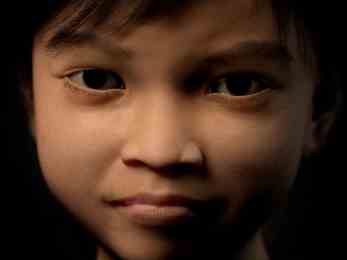THE TAKE AWAY
Virtual Child Sex Trafficking
Is it Wrong?
By Kersley Fitzgerald


One page/printer friendly
Part 1

The problem is illustrated in the history of the U.S. law regarding virtual child pornography. The Child Pornography Prevention Act of 1996 made illegal "any visual depiction, including any photograph, film, video, picture, or computer or computer-generated image or picture" that "is, or appears to be, of a minor engaging in sexually explicit conduct."
The act had solid supporting findings. In Section 121, Subsection 1., points 4, 5, 7-10, Congress found that child pornography is used to seduce children into sexual activity, invades the privacy of the child represented, encourages child molestation and pedophilia, increases the market for child pornography, encourages society to see children as sexual objects, "undermines the efforts of parents and families to encourage the sound mental, moral and emotional development of children." It also found the effects are
the same whether the child pornography consists of photographic depictions of actual children or visual depictions produced wholly or in part by electronic, mechanical, or other means, including by computer, which are virtually indistinguishable to the unsuspecting viewer from photographic images of actual children;Furthermore, congress found that:
the danger to children who are seduced and molested with the aid of child sex pictures is just as great when the child pornographer or child molester uses visual depictions of child sexual activity produced wholly or in part by electronic, mechanical, or other means, including by computer, as when the material consists of unretouched photographic images of actual children engaging in sexually explicit conduct;
the elimination of child pornography and the protection of children from sexual exploitation provide a compelling governmental interest for prohibiting the production, distribution, possession, sale, or viewing of visual depictions of children engaging in sexually explicit conduct, including both photographic images of actual children engaging in such conduct and depictions produced by computer or other means which are virtually indistinguishable to the unsuspecting viewer from photographic images of actual children engaging in such conduct.Case closed? Not quite. In 2002, the Supreme Court struck down two of the 1996 act's provisions for being "overly broad".
Why was it overturned? Because of the definition of "free speech." Free speech isn't limited to verbal or written communication. It includes all metaphorical acts that represent but do not manifest a belief. Burning a flag represents a displeasure with a nation without manifesting any real damage to that nation. As written, the 1996 Act might have prohibited Romeo and Juliet and would have called into question any movie graphically showing teens or teenage characters having sex. The act was overturned because such fictional portrayals were blanketed under the heading of "speech" since the sex didn't really happen.
Does that cover virtual child pornography, since neither the child nor the act really exist?
It might. So in 2003, George W. Bush signed in the PROTECT Act, also known as the Amber Alert Law. This new law included the following:
Prohibits computer-generated child pornography when "(B) such visual depiction is a computer image or computer-generated image that is, or appears virtually indistinguishable from that of a minor engaging in sexually explicit conduct; (as amended by 1466A for Section 2256(8)(B) of title 18, United States Code). Prohibits drawings, sculptures, and pictures of such drawings and sculptures depicting minors in actions or situations that meet the Miller test of being obscene, OR are engaged in sex acts that are deemed to meet the same obscene condition. The law does not explicitly state that images of fictional beings who appear to be under 18 engaged in sexual acts that are not deemed to be obscene are rendered illegal in and of their own condition (illustration of sex of fictional minors).The law does not ban all simulated child pornography, just that which does not pass the Miller Test to include that which is obscene, and has no literary, artistic, political or scientific value (so Romeo and Juliet and even the use of "Sweetie" are allowed).
As you might guess, a subjective definition of "obscenity" isn't a very firm foundation. In 2008, Christopher Handley, a comic book collector, was charged with obscenity for owning comic books that depicted child pornography. The comics in question were a type of manga, although it's not clear whether they were yaoi (which depicts young, androgynous males in sexual situations and is, strangely enough, marketed to and usually collected by women) or "lolicon" (featuring schoolgirls in sexual situations — derived from Nabokov's Lolita). Fearing the thought of facing a jury, Handley pled guilty on obscenity charges. The Comic Book Legal Defense Fund roundly condemned the entire affair claiming:
From start to finish, the case against Christopher Handley was an appalling abuse of the justice system. Chris Handley is going to jail not because of anything he did, but because of what he reads and thinks. In prosecuting this case, the United States government has distorted the purpose of child pornography laws, which are in place to prevent and punish the abuse of actual people who are the victims of a heinous crime. Putting Chris Handley in jail protects no one — he and his family are the only victims.The judge agreed, ruling that criminalizing "a visual depiction of any kind [of child pornography], including drawing, cartoon, sculpture, or painting" was unconstitutional.

Continue to Part 3
Photo: Sweetie
comments powered by Disqus
Published 1-7-14

